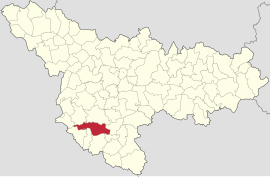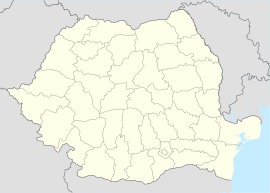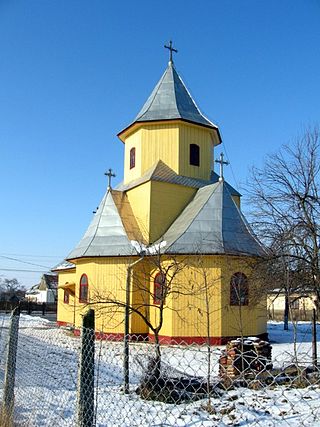
Nițchidorf is a commune in Timiș County, Romania. It is composed of three villages: Blajova, Duboz and Nițchidorf.

Foeni is a commune in Timiș County, Romania. It is composed of two villages, Cruceni and Foeni.

Cenei is a commune in Timiș County, Romania. It is composed of two villages, Bobda and Cenei. It also included Checea until 2004, when it was split off to form a separate commune.

Giulvăz is a commune in Timiș County, Romania. It is composed of four villages: Crai Nou, Giulvăz, Ivanda and Rudna.
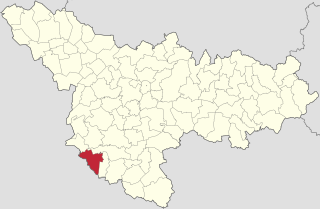
Giera is a commune in Timiș County, Romania. It is composed of three villages: Giera, Grănicerii and Toager.

Giarmata is a commune in Timiș County, Romania. It is composed of two villages, Cerneteaz and Giarmata.

Fârdea is a commune in Timiș County, Romania. It is composed of seven villages: Drăgșinești, Fârdea, Gladna Montană, Gladna Română, Hăuzești, Mâtnicu Mic and Zolt.

Mănăștiur is a commune in Timiș County, Romania. It is composed of four villages: Mănăștiur, Pădurani, Remetea-Luncă and Topla. It is located in the contact area of the Lugoj Plain with the Lipova Plateau, on the upper course of the Bega River.

Livezile is a commune in Timiș County, Romania. It is composed of two villages, Dolaț and Livezile. From 1972 to 2006, its villages were part of Banloc commune.

Liebling is a commune in Timiș County, Romania. It is composed of three villages: Cerna, Iosif and Liebling.

Jebel is a commune in Timiș County, Romania. It is composed of a single village, Jebel, and also included Pădureni village until 2004, when it was split off to form a separate commune.

Iecea Mare is a commune in Timiș County, Romania. It is composed of a single village, Iecea Mare, and was part of the commune of Cărpiniș until 2004, when it was split off.

Peciu Nou is a commune in Timiș County, Romania. It is composed of three villages: Diniaș, Peciu Nou and Sânmartinu Sârbesc.

Pădureni is a commune in Timiș County, Romania. It is composed of a single village, Pădureni. It was part of Jebel commune before being split off in 2004.

Parța is a commune in Timiș County, Romania. It is composed of a single village, Parța, and was part of Șag commune until 2004.
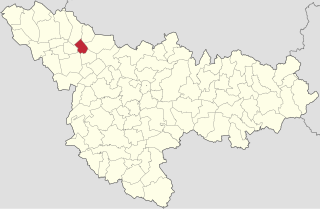
Pesac is a commune in Timiș County, Romania. Part of Periam commune until 2007, it is composed of a single village, Pesac.

Remetea Mare is a commune in Timiș County, Romania. It is composed of two villages, Ianova and Remetea Mare.

Racovița is a commune in Timiș County, Romania. It is composed of six villages: Căpăt, Drăgoiești, Ficătar, Hitiaș, Racovița and Sârbova.

Sânmihaiu Român is a commune in Timiș County, Romania. It is composed of three villages: Sânmihaiu German, Sânmihaiu Român and Utvin. It lies on the canalized section of the river Bega, southwest of Timișoara.
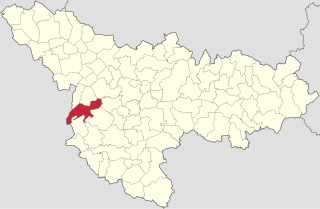
Uivar is a commune in Timiș County, Romania. It is composed of four villages: Pustiniș, Răuți, Sânmartinu Maghiar and Uivar. Two other villages, Otelec and Iohanisfeld, which had been part of Uivar commune since 1968, were split off in 2008 to form Otelec commune.

